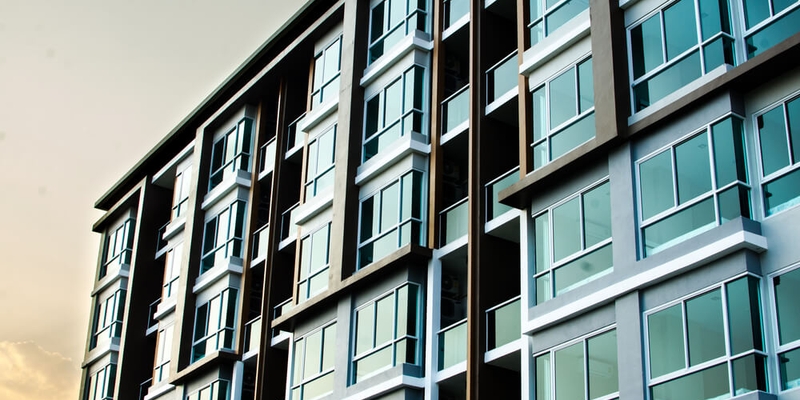
If you are not redirected within 30 seconds, please click here to continue.
Samedi: 10h – 16h HAE

If you are not redirected within 30 seconds, please click here to continue.
If you are not redirected within 30 seconds, please click here to continue.
Lenders will offer 30-year amortizations on some insured mortgages. How does this affect you?

As the economy slowly bounces back from the impacts of the pandemic, many Canadians are still waiting to buy a home. A few significant barriers remain: While interest rates have begun creeping down from the peak of 5%, both the Bank of Canada (BOC) and economists have made it clear that they won’t reach the historic lows of previous years anytime soon.
Meanwhile, home prices, way above the realm of affordability for most people, have stood at a relative standstill.
The trickle of homebuying continues in fits and starts. People who need to buy a home will still buy a home, taking on more and more debt in order to do so, while renters who either can’t qualify for a mortgage or find their rent more palatable than a mortgage and down payment, will continue to wait out the storm.
However, a slow and unaffordable housing market hurts more than just buyers and sellers – it also hurts builders, who, without guaranteed funding in the form of buyers and investors, can’t get moving on sorely needed housing developments.
Without development, there’s less inventory for the growing population of residents in need of housing, which leads to higher prices. With higher prices, more people are kept off the property ladder, a key step towards economic stability and security.
As part of its budget announcement, the Federal government laid out new incentives to help first-time homeowners, including changes to the mortgage amortization schedule and increasing the Home Buyer’s Plan from $35,000 to $60,000.
As of August 1, the Federal government will allow 30-year amortization periods on insured mortgages for first-time homebuyers on new builds.
There’s a lot packed into that sentence, so let’s break it down.
How much money will you save by stretching your amortization?
Though uninsured mortgage-holders have the option of extended amortizations, previously, insured mortgage-holders going through a traditional lender were only allowed a maximum of 25 years to pay off their mortgage.
However, high interest rates meant that anyone taking out a new mortgage – whether variable or fixed – would have to contend with an inflated monthly payment for the foreseeable future.
A longer amortization period results in slightly smaller monthly payments, and slightly less interest on those smaller payments – as well as the ability to qualify for a higher mortgage.
However, a longer amortization period also results in more overall interest paid by the end of the mortgage.
For instance, a homebuyer who makes an income of $100,000 with a mortgage interest rate of 5% would be able to qualify for a home purchase price of $405,000, if they opted for a 25-year amortization schedule.
Assuming a minimum 5% down payment of $20,240, their monthly mortgage payment would be $2,327.23, including interest.
If that same homebuyer decided to extend their amortization to 30 years, their home purchase price would be upped to $428,000 (an increase of $23,000), but their monthly payment would be slightly lower at $2,261.
However, by increasing the amortization period by five years, they’ll have paid an additional $7,116 in interest (assuming a 5% interest rate throughout).
Drawbacks of extending your amortization
Being able to qualify for $23,000 more for a home while paying over a hundred dollars less per month sounds like a sweet deal — but there’s a lot of fine print to sift through. Let’s dive in.
It won’t help everyone
In markets where home prices are lower than $1 million, and which have a steady growth of new homes, extending amortizations could be the clincher to getting many people’s feet in the doors of their first homes.
But it likely won’t help people in markets like Vancouver or Toronto, where the average home price is well over a million, with condos pushing $700,000 or more.
“The majority of new builds will be above the million-dollar mark, which means that mortgages taken out for those properties will be uninsured,” says mortgage broker and RATESDOTCA expert Victor Tran.
Fees on fees (on fees)
Unlike conventional mortgages, insured mortgages are subject to a mortgage default premium fee, which is then subject to additional provincial sales tax.
“That means you’re paying interest on top of interest,” says Tran. “But then that PST is payable out of pocket and part of the closing costs. So, there’s going to be more fees overall if one is to go from 25 years to 30 years.”
In June, the CMHC also announced that qualified buyers who opt to increase their amortization will also be subject to a premium surcharge of 20bps to reduce the associated risks associated.
The ‘new build’ nuisance
While this option would certainly benefit those who purchased a home pre-construction and have seen mortgage rates soar, anyone house-hunting may have trouble finding a new build to let them pay less than 20% as a down payment – which would render their mortgage uninsurable.
“It's very rare to come across a new build that will require or ask for less than 20% of a deposit,” says Tran, adding that builders need higher down payments to justify the cost of construction. “In those cases, the home purchaser won't even be able to insure that mortgage anyway because the builder requires minimum of 20% of its deposit.”
Looking forward: Will this make a dent in overall affordability?
Certainly, some homeowners will be able to take advantage of extended amortizations and start climbing up the housing ladder. Many others may still be stuck renting for the foreseeable future. Moreover, some who qualify may find that it doesn’t make a huge difference either way. You can already get a 30-year-amortization, on a new build or an old one, whether you’re a first-time-buyer or not, especially if your mortgage is uninsured. And if it is insured, many B-lenders or alternative lenders offer extended amortizations – however, you’d be taking on more risk if you go that route.
So, will this new piece of legislation be the silver bullet to saving the housing market? We wouldn’t hold our breaths on it.
Compare Mortgage Rates
Engaging a mortgage broker before renewing can help you make a better decision. Mortgage brokers are an excellent source of information for deals specific to your area, contract terms, and their services require no out-of-pocket fees if you are well qualified.
Here at RATESDOTCA, we compare rates from the best Canadian mortgage brokers, major banks and dozens of smaller competitors.
Get money-saving tips in your inbox.
Stay on top of personal finance tips from our money experts!








